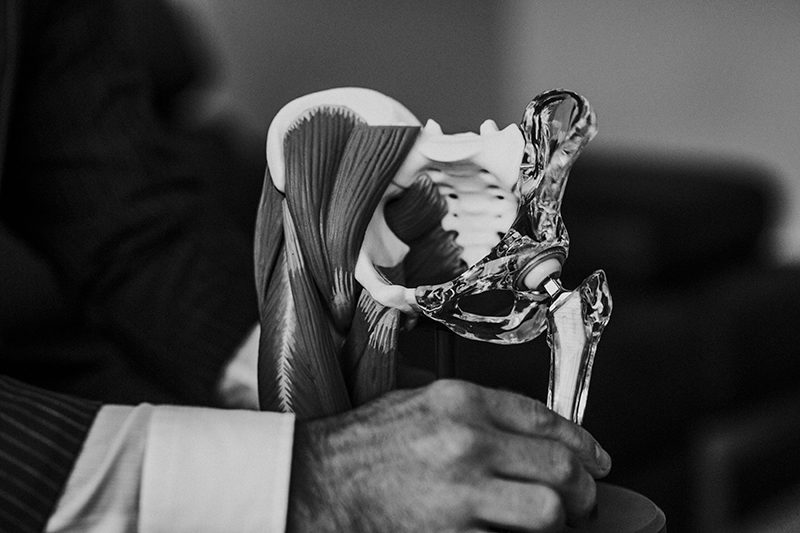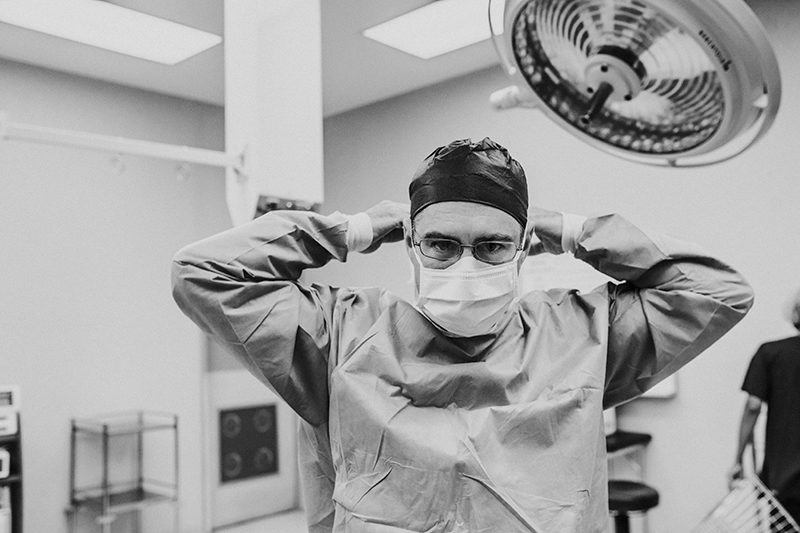Hip Information
SURGICAL PROCEDURES
Total hip replacement using the Direct Anterior Approach (DAA)
Dr Blythe uses the DAA for all primary hip replacements unless there is severe deformity or prior surgery. Traditional approaches to performing total hip replacement require cutting muscles at either the back or side of the hip and then reattaching them at the end of the procedure. The DAA is performed by separating muscles at the front of the hip and avoids cutting any muscles.
The DAA is a variation on a surgical approach performed since the 1940’s and so is not “experimental”. In its modern form it is being used increasingly in Europe and North America and as an established hip approach. Dr Blythe uses implants that are the same as used in traditional hip replacement approaches and are not specific to the DAA. These are implants which have a proven track record.
For more information about the DAA click here.
ROBOTIC ASSISTED TOTAL HIP REPLACEMENT USING THE DAA
Dr Blythe was the first surgeon in Western Australia to perform a Robotic Assisted Total Hip Replacement using the DAA. This involves generating a 3D model of the pelvis and femur from a Computed Tomography (CT) scan. On computer, prior to the procedure the implant sizes and position are planned as accurately as possible to restore optimal anatomy. During the hip replacement performed through the DAA, the robotic arm assists in positioning implants to replicate the 3D preoperative plan.
OPTIMISED POSITIONING SYSTEM (OPS) TOTAL HIP REPLACEMENT USING THE DAA
Dr Blythe then transitioned to using OPS for performing total hip replacements. Similar to the planning for a Robotic Assisted Total Hip Replacement a 3D model is generated from a CT scan and the implant sizes and position are planned. The motion of the spine and pelvis when moving from sitting to standing affects hip replacement motion in a variable and unpredictable way. OPS simulates the hip replacement during these movements to optimise stability. Guides from the individualised plan are 3D printed. During the hip replacement performed through the DAA those guides are used to position the implants to replicate the 3D preoperative plan.
For more information about OPS click here.


FAQ
How long will I be in hospital after a DAA THR?
Usually one to two nights. If you live alone, have mobility or medical issues or suffer a complication you may require longer. Depending on these factors some patients may require care by a rehabilitation physician before going home.
Will I need a wedge cushion or toilet chair after a DAA THR?
No you will not. Because the posterior tendons of the hip are intact you can sit and bend over as you feel comfortable.
Do I have to sleep on my back after a DAA THR
No you do not. Because the incision is on the front of the hip you can sleep on either side. It may take several weeks before you feel comfortable sleeping on the operated side.
How long will I require crutches after a DAA THR?
Walking aids are for security and are not mandatory. Most patients will use crutches or a walking stick for one to four weeks. Falling over risks fracture or dislocation so if in doubt use a walking aid.
Will I have staples or clips that need to be removed?
No, Dr Blythe only uses dissolvable sutures for DAA THR. The waterproof dressing needs to be kept intact until the two week post-operative appointment.
How soon after a RIGHT THR can I drive?
You are able to drive after six weeks providing you feel safe and confident to do so.
How soon after a LEFT THR can I drive?
If you have an AUTOMATIC vehicle and have had a LEFT THR you are able to drive after two weeks providing you feel safe and confident to do so.
Sex after THR?
This is a question patients often want to ask but rarely do. The usual concerns are when to resume intercourse and stability of the replacement in doing so.
Resumption of intercourse.
This requires that the wound has healed (usually two weeks) and that comfort permits intercourse. The time to resuming intercourse is variable and up to the individual.
Stability of prosthesis.
The main concern for both patients and surgeons is the risk of dislocation due to the potential positions the hip can be placed in. In general, where the partner with the hip replacement is lying flat, standing or seated, the hip will be stable.